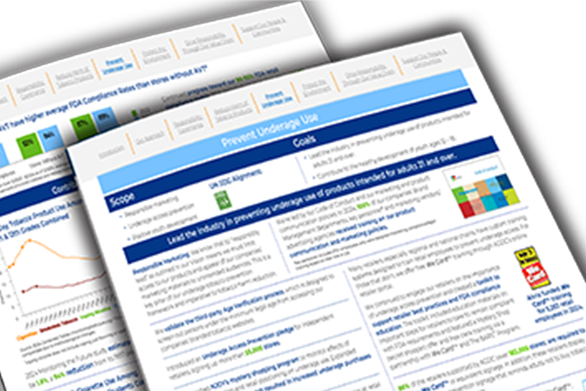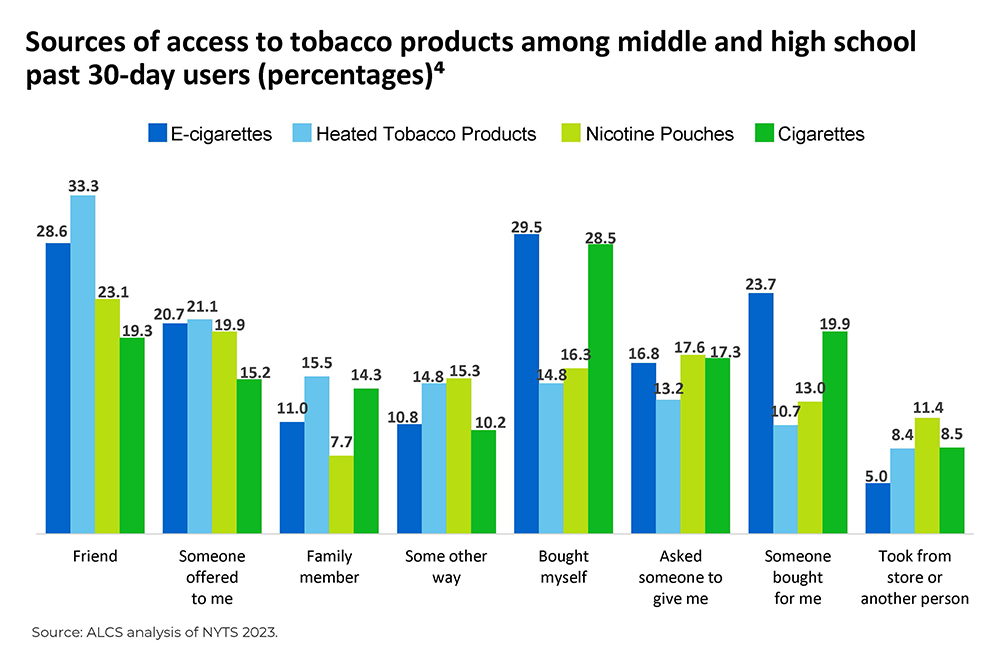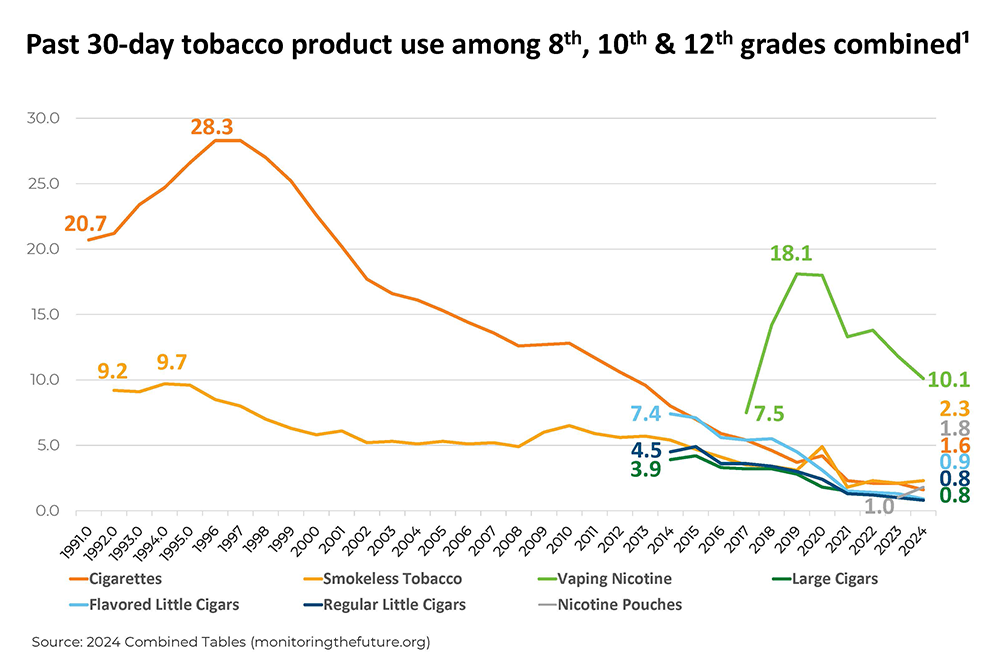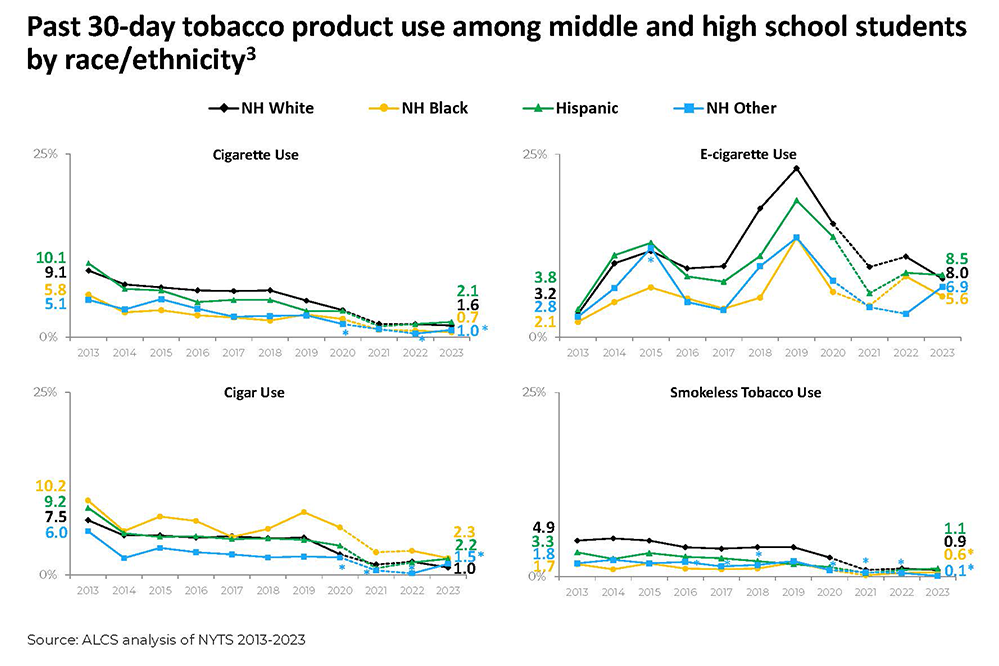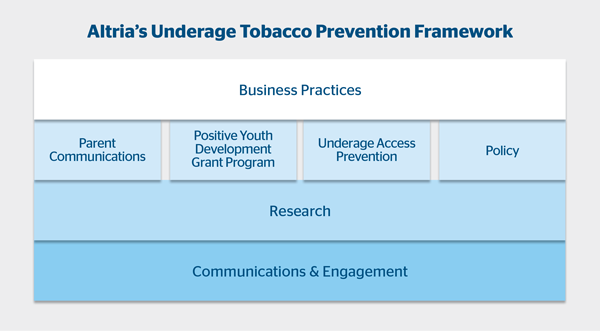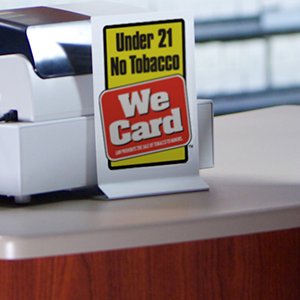
Prevent Underage Use
Kids should not smoke, vape or use any tobacco or nicotine products. It's a goal we share with public health, policymakers, parents, youth-serving organizations and many others who care about young people making healthy decisions.
Today, underage use of conventional tobacco products is at the lowest levels in a generation. In fact, the 2024 Monitoring the Future1 study estimates youth smoking rates to be 1.6 percent, a 94 percent reduction from its 1997 peak of 28.3 percent. Food and Drug Administration (FDA) regulation covers nearly every aspect of how tobacco products are manufactured, marketed and sold.
After an alarming rise in youth e-vapor rates in 2018 and 2019, we observed a significant decline of past 30-day e-vapor use among middle and high schoolers from its peak of 20 percent in 2019 to 5.9 percent in 2024, the lowest level in a decade, according to the 2024 National Youth Tobacco Survey.
While we recognize the progress, we understand the importance of tobacco manufacturers, regulators and policymakers staying vigilant and acting collaboratively to prevent youth use of products intended for adults 21+.
Altria is committed to being part of the solution. Through our 2020 materiality assessment, our stakeholders reaffirmed their expectations that we continue to lead our industry in preventing underage use. The scope of our focus is intentionally broader than "preventing underage tobacco use".
We acknowledge the responsibility we have to shape positive outcomes for youth in preventing use across a broad range of for-adult product categories in our operating company and investment portfolios.
We also acknowledge the immediate opportunity in front of us:
- to preserve the opportunity for tobacco harm reduction among adults;
- ensure youth use of traditional tobacco products remains at generational lows and continues to decline; and
- prevent youth use of smoke-free tobacco products intended for adults 21+.
Our Progress
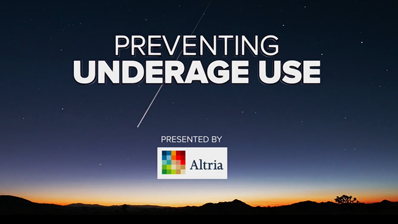
Jennifer Hunter shares Altria's progress on Preventing Underage Use on The Hill TV. Video courteous of K Street Studios.
Youth Tobacco Use Data
Our Strategy & Approach
For more than two decades, Altria's tobacco companies have made significant investments to prevent kids from using tobacco, guided by our Standards for Underage Use Prevention and underage tobacco prevention framework. These efforts include:
- supporting programs and organizations that positively influence kids and their decision not to engage in risky behaviors like tobacco use;
- providing parents with tools to help them raise kids who don't use tobacco;
- supporting trade programs, retailer training and legislative efforts that help prevent underage access to tobacco products; and
- taking steps designed to limit reach of their brands and marketing materials to unintended audiences.
Accountability Infrastructure
To advance the Preventing Underage Use goals, we rely on established infrastructure, employee resources and shared accountability across a variety of business functions.
Standards for Underage Use Prevention
In accordance with our Standards for Underage Use Prevention, each tobacco operating company and service company affiliate works to identify, support, develop and execute programs to help prevent underage use. Annual Underage Tobacco Prevention plans outline the concrete steps each operating company will take to help prevent underage tobacco use.In 2020, we updated these Standards to reflect our broader vision of success and codify our accountability infrastructure, consisting of Board oversight, Altria’s Underage Use Prevention Steering Committee and related expectations for future, potential strategic investments.
Underage Tobacco Prevention Framework
Our underage tobacco prevention framework has served as an important anchor for how we contribute to reducing underage use rates of tobacco products.
Deepening Our Commitments Across the Framework
As our work to prevent underage tobacco use continues, we’re acutely focused on youth e-vapor use and deepening our efforts across:






